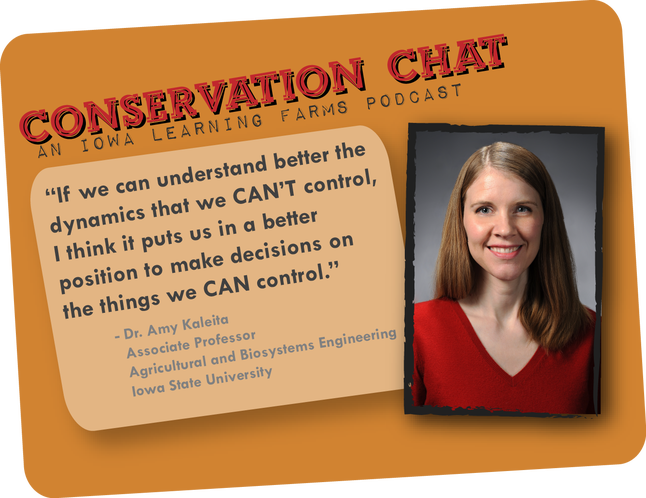Post originally appeared on the Iowa Learning Farms website by Ann Staudt.
Precision agriculture is a unique, emerging field, and it is certainly one that is rapidly evolving before our very eyes. The complex world of remote sensing, big data, ag informatics, statistics, and on-the-ground farm management means there’s a whole lot of data out there … how do we make sense of it all?
Meet Dr. Amy Kaleita. High energy, eternal optimist. Agricultural engineer. Lover of learning. Passionate teacher and researcher. Soil Whisperer (or some might say Soil Listener).

Kaleita’s work at Iowa State University is truly at the intersection of conservation, information technology, and the world of precision agriculture. While precision ag technology is commonly used by farmers and crop consultants across the state of Iowa today in such applications as nutrient management (variable rate technology) and precision seed placement, Kaleita is on the forefront of the next generation of precision ag – precision conservation. Kaleita’s research efforts range from studying different sensor technologies, including both embedded [contact] sensors, such as in-the-ground soil moisture sensors, as well as non-contact sensors [data collected from drones], to optimizing the layering of those different technologies to obtain the best data sets possible.
However, collecting the data is just the start — the real challenge emerges in sorting through huge amounts of data and trying to make sense of it all! Which is just where Kaleita comes into play, evaluating and analyzing the vast amounts of data collected in the field. She strives to identify patterns and linkages that can help us better understand the relationships between such factors as crop yield variability, precipitation, soil moisture, hydrology, transport of dissolved contaminants (such as nitrate-nitrogen), and on-the-ground conservation practices. As Kaleita puts it, a big part of her job is trying to “understand uncertainty.”
She goes on to explain, “In an agricultural context, there are so many sources of unexplained variability … things that you do on the landscape that cause results, but they cause different responses under different conditions, and so how do those conditions change over time and space?
“The soil is very different, and it changes over time, and it certainly changes over space. The rain, and the air temperature, and the wind speed, and all of that stuff cause responses in the crop and they cause the interaction between the crop and the soil to change. And so [we’re] trying to understand all of the things that cause those differences, and then trying to design systems that can be responsive to that variability.”
Tune in to Episode 27 of the Conservation Chat for more of this fascinating conversation with Dr. Amy Kaleita! You can also download or listen to any of the previous podcast episodes on the Conservation Chat website and on iTunes.